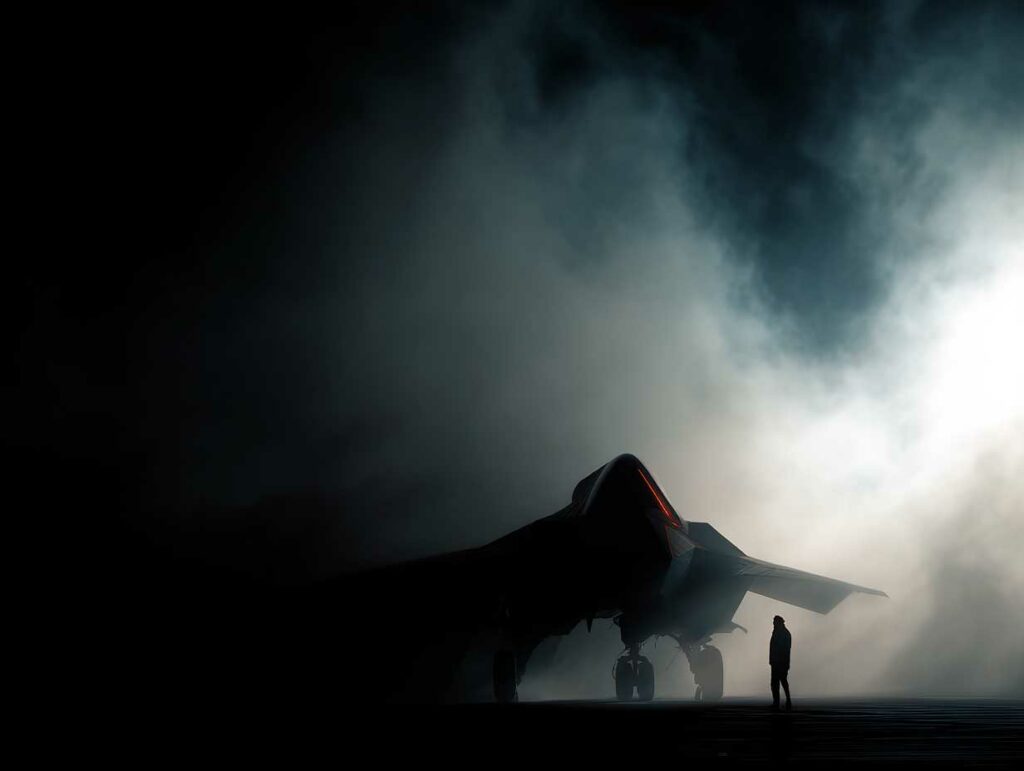
The Pentagon’s 2026 budget allocates $3.5 billion to the F-47, freezes the F/A-XX program, and reduces F-35 purchases in favor of modernization.
The Pentagon’s 2026 budget marks a strategic shift: top priority is given to the F-47, a sixth-generation fighter jet developed by Boeing for the US Air Force, with funding of $3.5 billion (€3.26 billion). This decision will result in the suspension of the Navy’s F/A-XX program and a significant reduction in F-35 purchases, offset by investments in Block 4 modernization and maintenance of the existing fleet. The Pentagon justifies this decision by citing the limited capacity of the defense industry to manage two advanced stealth programs in parallel. The budget also provides for an expansion of the F-15EX fleet and increased support for collaborative drones. Despite criticism from the industry and some members of Congress, the Department of Defense has confirmed its commitment to anchoring the future of combat aviation around the F-47 as the primary vehicle for the sixth generation.
Massive funding for the F-47 refocuses air modernization efforts
The F-47 program, described as the first piloted sixth-generation fighter aircraft, is becoming the core of the US Air Force’s tactical strategy. The 2026 budget allocates $3.5 billion (approximately €3.26 billion) for this program alone. This amount covers the accelerated industrial development phase and the first steps in pre-production. The decision, approved by President Trump in March 2025, officially commits Boeing as the platform’s prime contractor.
This strategic choice is based on the desire to guarantee air superiority over China and its advances in stealth fighter technology, particularly Chinese sixth-generation projects based on autonomous drones, distributed sensor networks, and AI data fusion.
Above all, this refocusing is justified by the capacity limitations of the US defense industry, particularly in stealth systems engineering. The Pentagon considers it impossible to develop two advanced stealth aircraft in parallel—the F-47 and the F/A-XX—without compromising the quality or delivery schedule of one of the two. This point has been disputed by Boeing Defense but confirmed by the Department of Defense.
The rise of the F-47, which stems from the NGAD (Next Generation Air Dominance) program, therefore heralds a decisive shift for the USAF: an aircraft capable of acting as air mission commander integrating drones, interoperable with existing platforms, and designed to survive in highly contested airspace.
The freeze on the F/A-XX calls into question the future of US naval aviation
The F/A-XX program, intended to equip US aircraft carriers with a stealth successor to the F/A-18E/F, has been largely put on hold. The 2026 budget allocates only $74 million (€69 million), compared to the several hundred million hoped for. This funding is only to maintain the design and avoid total cancellation of the program.
This decision illustrates an exclusive prioritization of the F-47 and creates uncertainty about the Navy’s ability to renew its carrier-based fleet. While a navalized F-47 is theoretically possible, the technical constraints are considerable: reinforced structure for catapults, marine corrosion, hangar dimensions, and range with limited refueling. The example of the F-35 shows that the land-based (A), carrier-based (C), and short takeoff (B) versions share only 20% of their components, despite their similarities.
However, companies such as Northrop Grumman, which are bidding for the F/A-XX, are continuing their research. Lockheed Martin was eliminated from the process in March 2025. The lack of clarity surrounding this program weakens the Navy’s technological position in the long term.
This delay could push back the entry into service of a new breakthrough carrier-based aircraft by more than 10 years, in favor of simply supporting the current F-35Cs, which are themselves affected by the maintenance issues discussed below.
Reduction in F-35 orders changes fleet structure
The 2026 budget reduces F-35 purchases to 47 aircraft, down from the 74 originally planned, a decrease of more than 36%. Details by version have not been released, but the F-35A version of the USAF appears to be the main one affected. The aim is to stabilize the minimum production rate while redirecting resources to modernization and operational readiness.
The Block 4 program will thus receive increased support. This package aims to integrate:
– an improved AN/APG-85 radar,
– extended electronic warfare capabilities,
– compatibility with new long-range weapons.
However, these improvements require the TR-3 hardware upgrade, which is still awaiting official approval. Significant delays, cost increases, and temporary delivery stoppages have affected the program’s credibility. The TR-3 is supposed to be finalized by May 2025, but no formal approval from the DoD has been announced.
At the same time, the lack of spare parts continues to undermine availability rates. In 2023, the average availability of the F-35 was less than 60%, well below mission standards. This situation requires logistics investments of around $1 billion (€930 million) in the 2026 budget.

The alternatives put forward: F-15EX and CCA drones
To compensate for the F-35 reductions and the still uncertain schedule for the F-47, the USAF is investing heavily in complementary platforms. The budget provides $3 billion (€2.8 billion) to increase the F-15EX Eagle II fleet from 98 to 129 aircraft. These aircraft, which are not stealth but versatile, perform air superiority, interdiction, and nuclear deterrence missions at lower operating costs.
Another priority is the Collaborative Combat Aircraft (CCA) program, with a budget of $870 million (€807 million). The aim is to develop autonomous combat drones to support manned fighters such as the F-47. The YFQ-42A (General Atomics) and YFQ-44A (Anduril) models are currently under study. These systems could be operational by 2030 in formation with stealth fighters.
The development of the CCA opens up a hybrid prospect: manned aircraft combined with several support drones in a distributed tactical configuration, with sensor sharing, decoying, and enemy defense saturation.
Budget uncertainties and congressional debates
As with every budget cycle, Congress must still approve the Pentagon’s choices. In the past, funding for the F/A-XX has been called into question several times. In 2024, lawmakers expressed doubts about reducing the total number of operational US fighters in the face of the rapid expansion of the Chinese and Russian fleets.
Some elected officials, such as Tom Cotton, even suggested resuming production of modernized F-16s, which are less expensive and immediately available, to fill the capability gap.
In response to this situation, Lockheed Martin is now proposing a radical upgrade of the F-35, dubbed the NASCAR upgrade: a series of modifications that, according to the manufacturer, would offer 80% of the capabilities of a sixth-generation aircraft for 50% of the price. This option, although theoretical, could be chosen if the development of the F-47 or a naval successor falls behind schedule or exceeds costs.
The Pentagon’s decision to focus its resources on the F-47 is profoundly changing the future architecture of US combat aviation. The delay of the F/A-XX, the adjustments to the F-35, and the acceleration of collaborative drones show a shift toward a more integrated model, but also one that is more dependent on a single high-risk program. The defense aviation industry, already under pressure, will need to demonstrate resilience and technical clarity to deliver a reliable, interoperable, and truly superior F-47 on time.
War Wings Daily is an independant magazine.